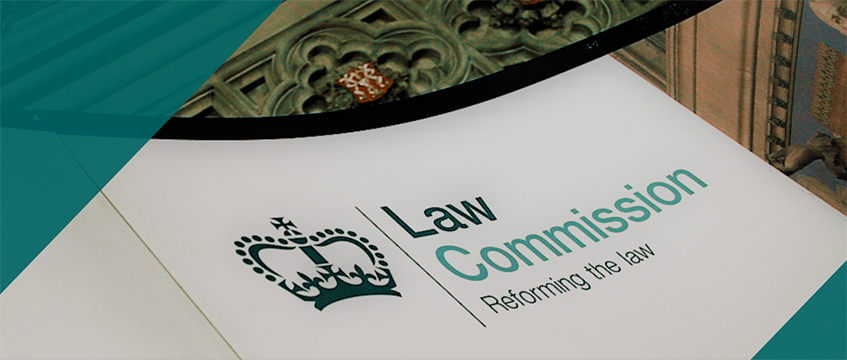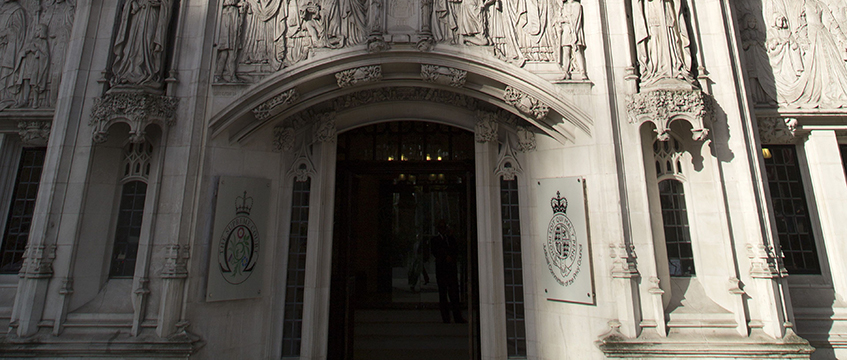Please explain what conditions have to be fulfilled by a leaseholder to enable him to take advantage of the Leasehold Reform Act 1967 (as amended).
One of the judges in Central Estates (Belgravia) Ltd v Woolgar [3] 1 WLR 1048 commented as follows on the Leasehold Reform Act 1967: “This is a jungle of legislation, sometimes ill-designed, causing endless litigation.” This was said in 1971. The amendments enacted in 1974 and 1980 have not improved the situation.
Sections 1-4 of the Act set out the conditions which must be satisfied to give a tenant (1) the right to acquire the freehold of the house or (2) the right to extend his lease for an additional 50 years:
(1) the tenant must be a leaseholder of a house;
(2) the tenancy must be a long tenancy;
(3) the property must be let at a low rent;
(4) the rateable value of the property must be below certain prescribed limits;
(5) the tenant must have occupied the preises as his only (or main) residence, either for the last three years or for a period amounting to three years in the last 10 years;
(6) the house must not be let or occupied with any other land to which it is ancillary or with any premises which are comprised in an agricultural holding.
Some of these qualifications require explanation.
“House”
The meaning of the word “house” is explained by section 2 as follows: “house includes any building designed or adapted for living in and reasonably so called, notwithstanding that the building is not structurally detached, or was or is not solely designed or adapted for living in, or is divided horizontally into flats or maisonettes, and:
(1) where a building is divided horizontally, the flats or other units into which it is so divided are not separate ‘houses’, though the building as a whole may be; and
(2) where a building is divided vertically, the building as a whole is not a ‘house’, though any of the units into which it is divided may be.”
Thus this definition includes semi-detached houses and terraced houses, but not flats or maisonettes. There is another limitation in respect of houses which are not structurally detached (ie terraced, “town”, and semi-detached houses). They do not fall within the Act if any material part of the building lies above or below a part of the structure not comprised in the house.
Any garage, outhouse, garden or yard let with the house will be included in the property subject to the enfranchisement.
The question of whether a building is “reasonably” called a house creates a problem. The courts are inclined to interpret this definition liberally.
Thus, in the case of Lake v Bennett [0] 1 All ER 457, a leasehold property was built as a house some 100 years ago. The ground floor was let (or, strictly speaking, sublet) as a licensed betting shop and the head-tenant (the applicant for the enfranchisement) lived in the upper floor and in the basement. The building was accepted as a “house” for the purposes of the Act. In Harris v Swick Securities Ltd [1969] 3 All ER 113 it was held that a person who occupied a small part of a house himself (and who sublet the remaining part of the house to four families) still occupied the house as his residence and was entitled to take advantage of the Act.
In Tandon v Trustees of Spurgeon Homes [2] 1 All ER 1066, the House of Lords (allowing an appeal from the decision of the Court of Appeal) considered Lake v Bennett and stated that the following three rules could be deduced from the Act:
(1) as long as a building (of mixed use) could reasonably be called a “house”, it would be within the statutory meaning of a “house” even though it could also reasonably be called something else;
(2) it was a question of law whether it was reasonable to call a building a “house”;
(3) if a building was designed or adapted for living in, only exceptional circumstances would justify the judge holding that it could not be called a “house”.
Section 2 of the Act gives the landlord the right to exclude mines and minerals from the enfranchisement (after ensuring proper support for the structure of the house). The landlord also has a right to include in the premises (or to exclude from them) any land which it is reasonable to include (or to exclude) from the enfranchisement. If there is any dispute about this matter, the county court will decide the issue.
“Long tenancy”
A “long tenancy” is a tenancy for a term exceeding 21 years. Three special cases are included in the definition of long tenancy:
(1) A tenancy contracted for a term exceeding 21 years remains within the scope of the Act, even if it is terminable before the end of its term by a notice given by either party.
(2) A tenancy for a term not exceeding 21 years (with a covenant for renewal without payment of a premium) will be within the Act if there has been one or more renewals, so that the total of the term comes to exceed 21 years.
(3) Where a tenant holding any property under a long lease (on the coming to the end of that tenancy) becomes a tenant of that property under another tenancy, then the latter tenancy will be treated as a “long tenancy”, irrespective of its duration. This provision also benefits anyone to whom the latter tenancy is assigned: Austin v Dick Richards Properties Ltd [5] 2 All ER 75.
Any period during which the long tenancy continues by virtue of Part I of the Landlord and Tenant Act 1954 is itself considered to be a “long tenancy” within the meaning of the Act.
However, the agreement cannot antedate the date on which the lease started. Thus in Roberts v Church Commissioners [1] 3 All ER 703, on May 15 1950 the tenant signed a contract for the grant to him of a lease of a house for a term of 10 1/4 years from September 1 1950. By another lease, dated October 29 1952, the premises were let to him for a term of 21 1/4 years, from September 1 1950 (retrospectively!). It was held that this lease was not a “long tenancy” as at no time during the tenancy had the tenant actually possessed a term for more than 21 years.
“Low Rent”
“Low rent” means a rent which amounts to less than two-thirds of the rateable value of the house on the “appropriate day”. The appropriate day will be the latest of the three following dates:
(1) March 23 1965 (the date of the White Paper which preceded the Act);
(2) the date on which the premises first appeared in the valuation list;
(3) the first day of the lease.
However, an exception is made for tenancies (other than building leases) which were granted between the end of August 1939 and the beginning of April 1963. These leases must have been under two-thirds of the letting value at the beginning of the tenancy. This was done in order to ensure that tenancies granted during that period (at what was then a rack rent) did not come within the Act merely as a result of the considerable increase in rateable values which came into force with the new valuation list (prepared in 1963 and operative from April 1 1965).
There is therefore an interesting problem as to how the letting value of the premises should be assessed. The House of Lords in Johnson v Duke of Westminster [0] 2 All ER 613 (following an earlier decision of the Court of Appeal: Manson v Duke of Westminster [1981] 2 WLR 428) stated that the “letting value” of a leasehold property (for the purposes of enfranchisement) was the best annual return obtainable in the open market for the grant of a long lease, whether that was achieved by letting at a rack rent or letting at a lower rent plus the payment of a premium. Accordingly, if at the beginning of a lease (between the end of August 1939 and the beginning of April 1965) the rent was less than two-thirds of the letting value including any premium, converted into an annual sum, the tenant was not precluded by section 4(1) of the Act from acquiring the freehold.
The situation is therefore as follows: The rent actually paid might exceed two-thirds of the rentable value if that value fails to take into account the decapitalised premium. But when the premium is decapitalised it increases the rentable value, and the rent actually paid then becomes a smaller proportion of that rentable value. If it falls to less than two-thirds of the rentable value (calculated in this way) the house comes within the Leasehold Reform Act.
Rateable value
Only houses within certain prescribed rateable values are within the scope of the Act. The “appropriate day” (explained above) governs the issue.
The original date was March 23 1965, and the original limit (under the old valuation list valid until March 31 1973) was £400 (in Greater London) or £200 (elsewhere). For tenancies created on or before February 18 1966 (including those created before March 23 1965), there is another possibility; they are within the scope of the Act if, under the new valuation list, valid from April 1 1973, the rateable value did not exceed £1,500 (in Greater London) or £750 (elsewhere).
In those cases where the tenancy was created after February 18 1966, the rateable value is either:
(1) £1,000 in London or £500 elsewhere (under the new valuation) — if the appropriate date falls on or after April 1 1973; or
(2) £400 in London or £200 elsewhere (under the old valuation) — if the appropriate day falls before April 1 1973. (These new limits were introduced by section 118 of the Housing Act 1974.)
In deciding whether a house fulfils the rateable value condition, a problem arises when two or more houses are converted into one residence. Three cases clearly show that the courts favour the possibility of enfranchisement, if each component house is within the rateable value limit, even if they have been structurally joined and (when taken together) exceed that limit. It is immaterial that they appear as one unit on the valuation list: Peck v Anicar Properties [1] 1 All ER 517; Wolf v Crutchley [1971] 1 All ER 519; Gaidowski v Gonville and Caius College, Cambridge [1975] 2 All ER 952.
Under section 1(4A) of the Act, the court may determine a reduction in the rateable value, if it is shown by the tenant that the rateable value limit has been exceeded by reason only of structural alterations, extensions or additions carried out by the tenant himself or by a previous tenant.
It should be noted that the price to be paid by the tenant for enfranchisement will be assessed differently for houses with a rateable value of less than £1,000 in London (or £500 elsewhere) than would be the case for those with a rateable value above these limits. (The former enfranchisements are much better value than the latter from the tenant’s point of view.)
“Only or main residence”
In Fowell v Rudford (1969) 21 P&CR 99 Lord Denning said: “While it is unusual, there is nothing to prevent each spouse having his own residence for the purpose of the Leasehold Reform Act 1967. This is a question of fact.”
With respect to the residence requirement, section 7 provides that, when the tenant of a house dies while occupying it as his residence, and a member of his family (also resident in the house) becomes tenant under the same tenancy, then (provided he himself also satisfies the residence requirement) he may apply for enfranchisement or for an extension of the lease. The phrase “a member of the family” is widely defined and the definition includes not only the tenant’s spouse, but also his children, parents, parents-in-law, sons-in-law, and daughters-in-law.
Under section 5, a tenant who has given notice to the landlord (claiming enfranchisement or an extension of his lease) can assign the tenancy with the benefit of that notice. The assignee may immediately proceed with the claim. If the assignor assigns without the benefit of the notice, the notice ceases to have effect and the assignee (the new tenant) will have to fulfil the condition of residence in his own right.
Procedure and jurisdiction
A tenant wishing to take advantage of the right to enfranchise his leasehold interest (or to extend his lease) must give notice to the landlord in a prescribed form. The landlord should give a counternotice within two months, stating whether or not he admits the tenant’s right and, if not, on what grounds he objects. Otherwise it will be assumed that the landlord does not object to the tenant’s request.
Sections 20 and 21, as amended by section 142 of the Housing Act 1980, establish jurisdiction in respect of disputes arising under the Act.
The county court has jurisdiction to determine the following legal problems:
(1) whether or not a person is entitled to enfranchisement (or to an extension of his lease);
(2) what provisions ought to be inserted into the conveyance (or into the lease); and (3) most other questions of law.
The rent assessment committee (which when dealing with these problems is known as the “leasehold valuation tribunal”) is responsible for determining:
(1) the price of the enfranchisement;
(2) the rent during the extended lease;
(3) the assessment of compensation payable to the tenant under section 17 and 18 of the Act (whereby enfranchisement or an extension of the lease, might lawfully be refused, eg because of the landlord’s plans to redevelop the site).
A right of appeal from the leasehold valuation tribunal lies with the Lands Tribunal.
Overlapping jurisdiction exists between the county court and the leasehold valuation tribunal in respect of those provisions which are to be included in the conveyance; the apportionment of rent (if the premises are to be split); and certain other questions. There are provisions for the county court to transfer such cases to the leasehold valuation tribunal if this should be considered convenient.










